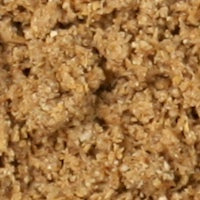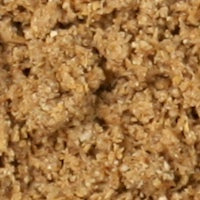Mash Filter Grains
Mash Filter Grains
- DM:26.0%
- Protein: 22.5%
- ME MJ/kg:11.7%
- Fibre: 17.0%
- Ash: 4.0%
Couldn't load pickup availability
Nutritionally similar to brewers grains, however, they differ substantially in appearance since the malted barley used is ground rather than left whole prior to the brewing process. This grinding helps extraction of more liquor ("wort") and the resultant grains are therefore higher in dry matter.
A moist by-product from the brewing industry made up of spent grains, widely fed to ruminant animals. Commonly used as a buffer feed or as a forage or concentrate replacer. High in digestible fibre and good quality protein which is quite undegradeable due to the heat progress in manufacture, but low in starch.
Ideal for mixing with other forage rations to stimulate dry matter intake and an excellent feed for cattle and sheep. Studies have shown its ability to reduce butterfat content by 0.2 > 0.3% when compared to grass silage as a sole forage, which may be due to the higher unsaturated oil content of brewers grains. The nutritional value may vary from source to source with dry matters ranging from 22 > 27%.

Typical Analysis
| Dry Matter | 26 |
| Crude Protein | 22.5 |
| DCP | 20 |
| ME | 11.7 |
| Crude Fibre | 17 |
| Oil (EE) | 7.5 |
| Ash | 4 |
| NCGD | 60 |
| NDF | 56.5 |
| Starch | 5.5 |
| Sugar | 1.5 |
| Starch & Sugars | 7 |
| FME | 9 |
| Salt | 0.6 |
| Calcium | 0.4 |
| Total Phos | 0.5 |
| Av Phos | - |
| Magnesium | 0.2 |
| Potassium | 0.05 |
| Sodium | 0.05 |
Recommended feeding
(per head / day)
Limits to Usage
Mash Filter Grains possess few limiting factors. Because they have a higher dry matter than traditional brewers grains feed rates should be slightly lower than traditional grains to give the same level of nutrients. Typically fed to cows at 6 - 9kg / head / day, beef cattle ad-lib and ewes 2 - 4 kg / head /day.
Storage / Processing
References / further reading
Disclaimer
Feeding rates are estimates, and other factors, such as animal health and environment, can have a greater impact on how animals perform. There is no guarantee that animals will perform as expected if fed the suggested rates. Rations should be balanced to provide enough energy and protein for animals, and they should include enough forage to keep the rumen healthy. Animals also need access to fresh water at all times.
- Choosing a selection results in a full page refresh.
- Opens in a new window.
